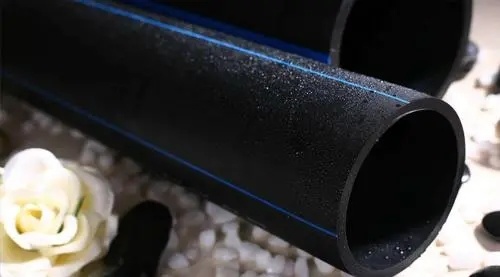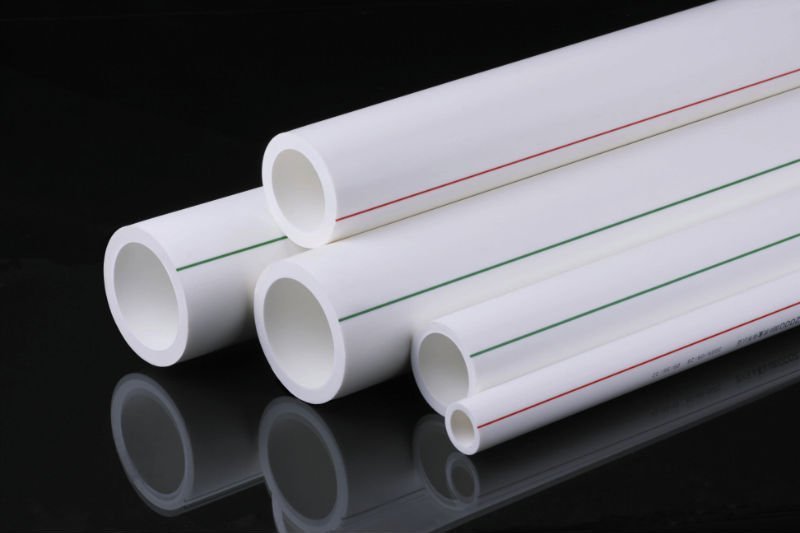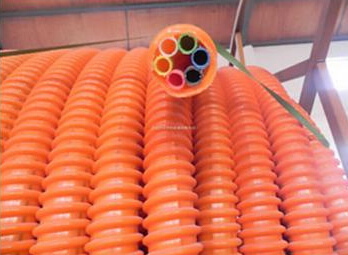Sustainable Pipeline Innovations: Porous Silicon Core Cluster Tubes Leading the Way
Nov 11,2024
Sustainable Pipeline Innovations: Porous Silicon Core Cluster Tubes Leading the Way
Table of Contents
- Introduction to Pipeline Innovations
- Understanding Porous Silicon Core Cluster Tubes
- Advantages of Porous Silicon Technology
- Applications of Porous Silicon Core Cluster Tubes
- Environmental Impacts of Pipeline Materials
- Engineering Challenges and Solutions
- The Future of Sustainable Pipeline Solutions
- Frequently Asked Questions
- Conclusion
Introduction to Pipeline Innovations
In recent years, the demand for sustainable engineering solutions has skyrocketed, particularly in the industrial sector. **Pipeline systems**, essential for transporting fluids, gases, and other materials, face increasing scrutiny regarding their environmental impact. As industries adapt to stricter regulations and consumer expectations, **porous silicon core cluster tubes** have emerged as a groundbreaking technology that promises to revolutionize pipeline construction and operation.
This article explores the innovative characteristics of porous silicon core cluster tubes, highlighting their benefits, applications, and potential to lead the industry toward a more sustainable future. We delve into the implications of using these tubes and the various challenges that engineers face in their implementation.
Understanding Porous Silicon Core Cluster Tubes
Porous silicon core cluster tubes are a novel material designed to enhance the performance and sustainability of pipeline systems. These tubes are composed of a **silicon core** that is engineered to include **porous structures**, allowing for improved fluid dynamics and reduced material waste. The unique properties of these tubes make them an attractive option for a variety of applications.
The Composition of Porous Silicon Tubes
The primary component of these tubes is silicon, a material known for its strength and versatility. The **porous structure** allows for a significant reduction in weight compared to traditional metal pipes while maintaining tensile strength. This lightweight nature translates into easier transportation and installation processes, benefiting project timelines and overall costs.
How Porous Structures Enhance Performance
The porous architecture of these tubes facilitates **optimized fluid flow**, reducing resistance and minimizing energy consumption during transportation. Furthermore, the increased surface area allows for enhanced interactions with fluids, improving the efficiency of chemical transfers and reactions within the pipeline system.
Advantages of Porous Silicon Technology
Integrating porous silicon core cluster tubes into pipeline systems provides numerous advantages that contribute to both operational efficiency and environmental sustainability.
1. Lightweight and Durable
The design of these tubes results in a lightweight product without sacrificing durability. This combination is particularly useful in remote locations or regions with challenging terrains, where heavy equipment may be difficult to utilize.
2. Improved Energy Efficiency
The reduction in fluid resistance leads to lower energy costs during pumping operations. By utilizing porous silicon core cluster tubes, industries can achieve significant savings on energy expenditures while reducing their carbon footprint.
3. Minimal Environmental Impact
The production process for porous silicon tubes is more environmentally friendly compared to traditional materials. Additionally, their non-toxic properties further minimize the ecological footprint, making them a preferred choice for industries aiming for sustainability.
4. Enhanced Resistance to Corrosion
Silicon is inherently resistant to many corrosive substances, making it suitable for transporting aggressive chemicals. This durability extends the lifespan of the pipeline, reducing the need for frequent replacements and minimizing waste.
Applications of Porous Silicon Core Cluster Tubes
Porous silicon core cluster tubes are versatile and can be utilized across various sectors. Their unique attributes make them suitable for multiple applications.
1. Chemical Processing
In the chemical processing industry, these tubes facilitate the safe and efficient transfer of chemicals, reducing the risk of spills and contamination. The enhanced surface interaction within the tubes also aids in the effectiveness of chemical reactions.
2. Water Treatment and Distribution
Water treatment facilities can benefit significantly from implementing porous silicon tubes. Their corrosion resistance and low energy requirements make them ideal for transporting purified water and wastewater.
3. Oil and Gas Industries
The oil and gas sector is increasingly adopting porous silicon technology for its pipelines. The reduced weight and improved flow characteristics contribute to safer and more efficient operations.
4. Renewable Energy Systems
As the world shifts toward renewable energy, porous silicon core cluster tubes can play a crucial role in transporting biofuels or fluids used in geothermal energy systems. Their lightweight nature aligns with the sustainability goals of renewable energy projects.
Environmental Impacts of Pipeline Materials
The environmental implications of pipeline materials cannot be overlooked. Traditional materials like steel and PVC often contribute to pollution during extraction, manufacturing, and disposal processes. In contrast, porous silicon core cluster tubes present a more sustainable alternative.
1. Lower Carbon Footprint
The production of porous silicon is less energy-intensive than that of conventional piping materials. This reduction in energy consumption directly correlates to a lower carbon footprint for industries that adopt this innovation.
2. Reusability and Recycling Potential
The recyclability of silicon presents a significant advantage. Unlike some plastics, which can take centuries to decompose, silicon can be repurposed, contributing to a circular economy in the industrial sector.
3. Reduced Waste Generation
The durability and longevity of porous silicon tubes result in fewer replacements and repairs over time, leading to decreased waste generation. This aligns with the global movement towards reducing single-use materials and promoting sustainability.
Engineering Challenges and Solutions
Despite their numerous advantages, integrating porous silicon core cluster tubes into existing pipeline systems is not without its challenges. Engineers must address specific hurdles to ensure successful implementation.
1. Compatibility with Existing Systems
One of the primary challenges lies in ensuring compatibility with existing infrastructure. Engineers must evaluate the potential for retrofitting traditional pipeline systems with porous silicon technology without significant overhauls.
2. Manufacturing Consistency
Maintaining consistent quality in the manufacturing process is crucial for the effectiveness of porous silicon tubes. Engineers are tasked with developing stringent quality control measures to ensure each tube meets the necessary standards.
3. Cost Implications
While the long-term savings are evident, the initial investment in porous silicon technology may deter some industries. However, emphasizing the **total cost of ownership**—considering longevity, reduced energy costs, and environmental impact—can help mitigate these concerns.
The Future of Sustainable Pipeline Solutions
The pathway to a sustainable future in pipeline technology is clear. As industries embrace innovative solutions, porous silicon core cluster tubes represent a significant advancement in the quest for environmentally friendly materials.
1. Research and Development
Ongoing research into enhancing the properties of porous silicon will lead to even more efficient designs. Innovations may focus on improving the manufacturing process or exploring new applications, expanding the technology's reach.
2. Industry Adoption and Standards
Widespread adoption of porous silicon tubes will require industry-wide standards and certifications. Collaborating with regulatory bodies will ensure that these materials are recognized and trusted in various applications.
3. Education and Awareness
Raising awareness within the engineering community about the benefits of porous silicon technology is vital. Educational initiatives and case studies showcasing successful implementations can drive interest and investment in these sustainable solutions.
Frequently Asked Questions
1. What are porous silicon core cluster tubes?
Porous silicon core cluster tubes are innovative pipeline materials designed with a lightweight silicon core featuring a porous structure, optimizing fluid transport efficiency and sustainability.
2. What advantages do these tubes offer over traditional materials?
They provide benefits such as reduced weight, enhanced energy efficiency, improved resistance to corrosion, and minimal environmental impact.
3. In which industries can porous silicon tubes be used?
Their applications span various sectors, including chemical processing, water treatment, oil and gas, and renewable energy systems.
4. Are porous silicon tubes environmentally friendly?
Yes, they have a lower carbon footprint compared to traditional materials, are recyclable, and contribute to reduced waste generation.
5. What challenges do engineers face when adopting this technology?
Engineers may encounter challenges related to compatibility with existing systems, manufacturing consistency, and initial cost implications.
Conclusion
As the industrial sector increasingly seeks sustainable solutions, **porous silicon core cluster tubes** stand out as a promising innovation in pipeline technology. Their numerous advantages—from lightweight construction to reduced environmental impact—position them as a leading choice for industries aiming to enhance efficiency while prioritizing sustainability.
By addressing engineering challenges and promoting widespread adoption, we can leverage the potential of porous silicon technology to revolutionize pipeline systems, paving the way for a greener, more sustainable future in industrial operations. The integration of these advanced materials not only meets regulatory demands but also aligns with the growing consumer preference for environmentally responsible practices.
Through collective effort and innovation, the industry can elevate its standards and foster a sustainable future, ultimately benefiting both businesses and the planet.
Latest News







